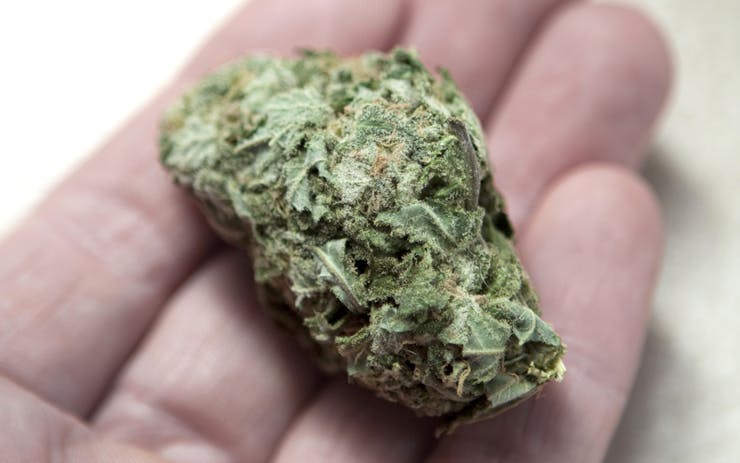A term used to refer to the petalless flowers of the cannabis plant. Buds, or “nugs,” contain trichomes which in turn have compounds such as cannabinoids and terpenes that can get you high or give medical benefits. Buds that grow closely together form colas, and buds must be dried and cured before they can be smoked or vaporized. Only female cannabis plants can produce buds.
“My buddy brought over some killer bud from Humboldt last weekend.”
“This bud is hella dry—you smoking ditch weed, dude?”
Uses of cannabis buds
Buds contain the highest concentration of trichomes on the cannabis plant—stalks, branches, and leaves also contain trichomes, but in trace amounts. After a plant is harvested, dried, and cured, buds can be smoked or vaporized. Colas, large clusters of buds, are typically broken down into smaller, individual buds, and stems are removed before consumption.
Buds can also be processed into concentrates. Depending on the extraction method, only buds may be used (as in rosins), or the whole plant, including buds (as in live resins). All extraction methods aim to strip trichomes off buds or cannabis plant material.
Buds can also be used to make infusions, i.e., cannabutter, cannabis oil, tinctures, and more, which can then be used to make edibles. To do this, buds must first be decarboxylated to activate cannabinoids.
Anatomy of a cannabis bud
- Pistil: The reproductive organ of the cannabis plant. The pistil’s primary function is to produce seeds.
- Stigma: The hair-like strands that protrude from the pistil. Their primary purpose is to collect pollen from a male cannabis plant. Based on the maturity of the plant, stigmas can be a variety of colors—an immature plant will have clear or white stigma, which will progressively turn yellow, orange, red, and brown as the plant matures.
- Bract: This structure protects the plant’s reproductive organs. They look like tiny, tear-shaped leaves and are heavily covered in trichomes.
- Calyx: Completely covered by the bract and imperceptible to the naked eye, the calyx is a clear layer between the bract and reproductive organs of the plant.
- Trichomes: These mushroom-shaped, resin-producing glands are responsible for creating a majority of cannabinoids and terpenes in the plant, and are also responsible for protecting the plant from predators and the environment.
